Some athletes are able to sprint paddle faster and are able to develop bigger muscles more easily whilst some athletes will be able to paddle for longer and further without fatigue. This is largely based upon which muscle fibres are recruited in your body. If you’re thinking of creating a SUP training programme for the summer then understanding what types of fibres you have in your muscles will greatly influence how you will adapt to any training programme.

Types of Muscle Fibres
Within our bodies, we have three different types of muscle fibers. Slow twitch or Type I fibers are identified by a slow contraction time and have a high resistance to fatigue. Functionally, slow twitch muscle fibers are used during aerobic activities which require low-level force production. This includes most daily activities such as walking and maintaining posture. Fast twitch or Type II fibers are identified by a quick contraction time and have a low resistance to fatigue. These fibers can be further divided into fast twitch A (or Type IIA) and fast twitch B (or Type II B) fibers. Fast Twitch A fibers have a moderate resistance to fatigue and are used for prolonged anaerobic activities with a relatively high force output. They could, for example, be used in a 400m SUP race. Meanwhile, fast twitch B fibers are very sensitive to fatigue and are used for short anaerobic, high force production activities, such as sprinting over a short distance.
During an isometric contraction where the muscle doesn’t change its length, both slow and fast twitch fibers produce the same level of force. However, as soon as you move, a dynamic contraction will lead to muscle shortening and lengthening. During dynamic contractions, fast twitch muscle fibers are capable of producing much more force and power when compared to slow twitch fibers.
Typically, endurance athletes have a greater proportion of slow twitch fibers whilst sprinters will have a greater proportion of fast twitch fibers. Research into identical twins has identified that muscle fiber composition is very much genetically determined. This means that genetically you’ll have either have a greater percentage of slow twitch fibers, making you better at endurance activities or you’ll have a greater percentage of fast twitch fibers making you better at shorter, faster activities.
What Muscle Fibres Do You Have?
この記事は SUP International の Early Summer 2019 版に掲載されています。
7 日間の Magzter GOLD 無料トライアルを開始して、何千もの厳選されたプレミアム ストーリー、9,000 以上の雑誌や新聞にアクセスしてください。
すでに購読者です ? サインイン
この記事は SUP International の Early Summer 2019 版に掲載されています。
7 日間の Magzter GOLD 無料トライアルを開始して、何千もの厳選されたプレミアム ストーリー、9,000 以上の雑誌や新聞にアクセスしてください。
すでに購読者です? サインイン
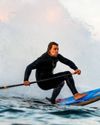
Turning Points
With spring in the air and the start of a new decade, thoughts naturally turn to what we can do differently in the name of betterment. Finn Mullen reflects on some changes to consider when looking to improve your SUP surfing.
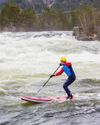
THE CLOSE OUT- TREV'S GREAT BIRTHDAY ADVENTURE
I have had my fair share of great birthdays, usually coinciding with a national holiday in a country that I’m visiting. But this one was a bit different.
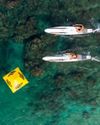
Paddle Science #18 - The Body Fortress. Boosting Immunity
At this time of year, the rate of infection for colds and flu normally tends to slow down as we enter warmer, springtime months. However, if you’ve been anywhere at all in the world recently, then there’s one word you can’t escape at the moment: Coronavirus. Infection rates, mortality rates and prognostic data are changing daily at the moment. As a new virus none of us have previously been exposed to it, meaning that currently, we have no immunity to it. It’s only through being infected by a virus that our bodies are able to make the right antibodies to not only enable us to recover but to also help protect us from any recurrent and future infection from it. If you’re keen to stay well and keep getting out on your SUP board this spring, then focussing on boosting your immune system is a positive step to take.
Ceylon Stories
Like a teardrop on the tip of the Indian sub-continent, Sri Lanka is a little tropical El Dorado of beautiful landscapes, rich cultural heritage and people with incomparable kindness. Thanks to its favorable exposure to the swells of the Indian Ocean, the has a large number of good waves along its incredible southwest coast where French pro Alexis Deniel and his partner Melanie had an unforgettable experience this winter. Discover their colorful journey through this dream destination sharing its jewels after decades of civil war and the tragedy of the 2004 tsunami.
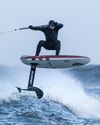
Polar Bear
In 2019, the Polar Bear showed the world his teeth. After a fourth place in the toughest SUP race in the world, the Red Bull Heavy Water, the now 19-year old Christian Anderson became World Champion in November in the Technical Race at the ISA World Championships in El Salvador. He also won the U-18 title on the Euro Tour with an 11th place overall. What’s behind the young Dane's rise to power?

SHADENFREUDE
TEST REPORTS
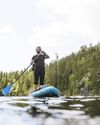
Desire Lines
We were on the outskirts of Helsinki, scouting a new destination for our sup camps. Just 45 minutes’ drive from the city, the untouched nature of the Nuuksio National Park stretched out before us. Mirror-smooth lakes, wild herbs and an impressive fauna waiting to be explored over on board or on foot via the many desire lines made by the land mammals.

Magical. Mystical. Epic.
Alexandra is a club ambassador and SUP racer for Bray Lake; relatively new to the SUP scene she completed her first race season in 2019. She participated in her first international event, the Gla Gla, 2020, and placed 1st Brit, 8th lady and 81st overall, out of a mass start of 637 paddlers. Here she shares the highlights of her first Gla Gla experience.
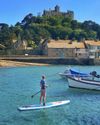
Green Medicine
As a keen outdoorsman and busy GP, Paul Sampson has come pretty close to attaining the mercurial work-balance. When not busy with his patients, he can be found hiking, climbing, paddle boarding, wild swimming… anything that gets him outside soaking up the great outdoors and reconnecting with nature in the beautiful South of Cornwall.
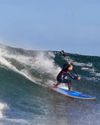
Depth Charge
Many of us have are staying away from the beach for a while, some are confined to our homes, but that doesn’t mean we can’t still train for the surf. If you try the following for just one week you’ll see results, never mind three months…